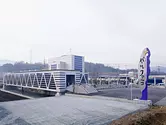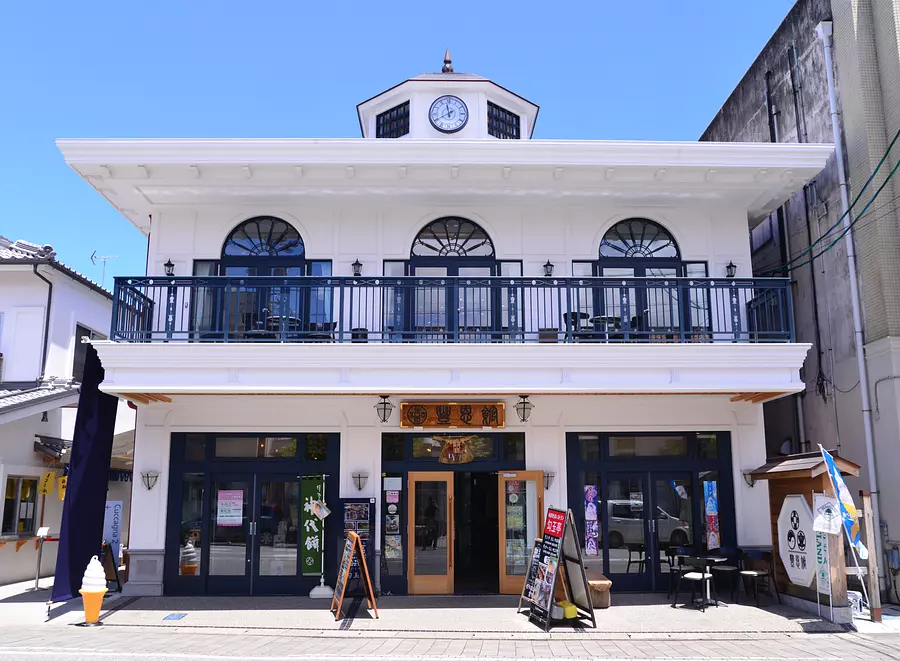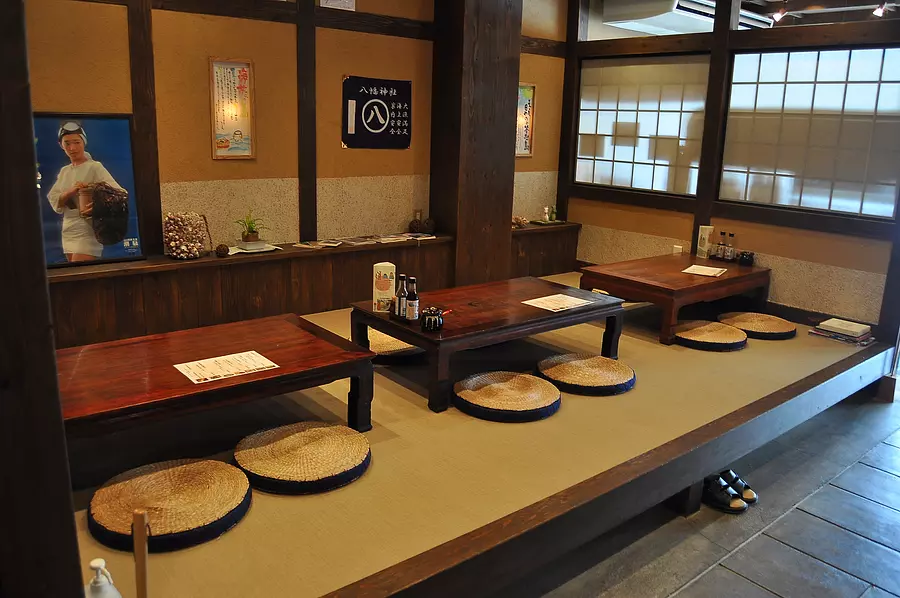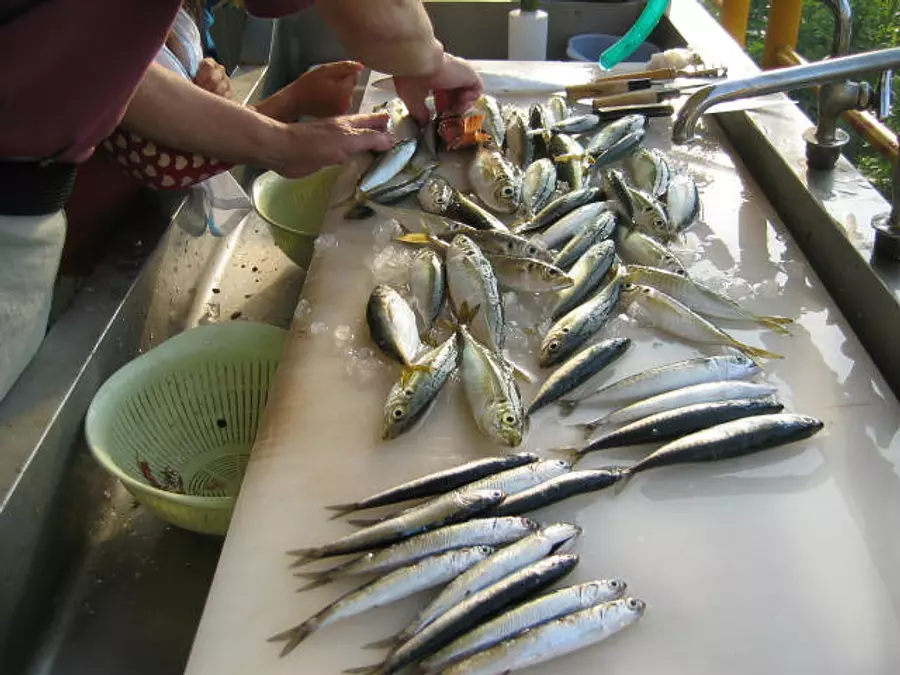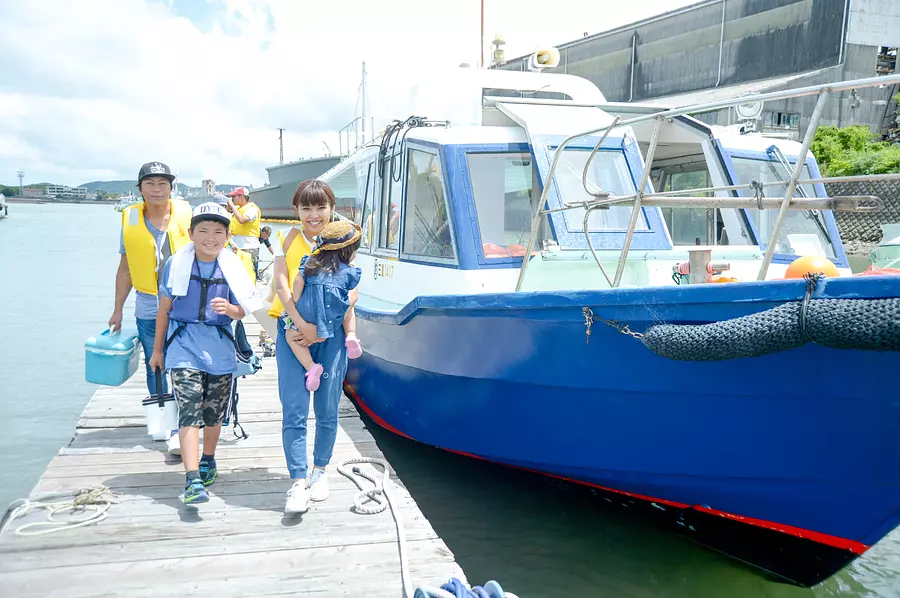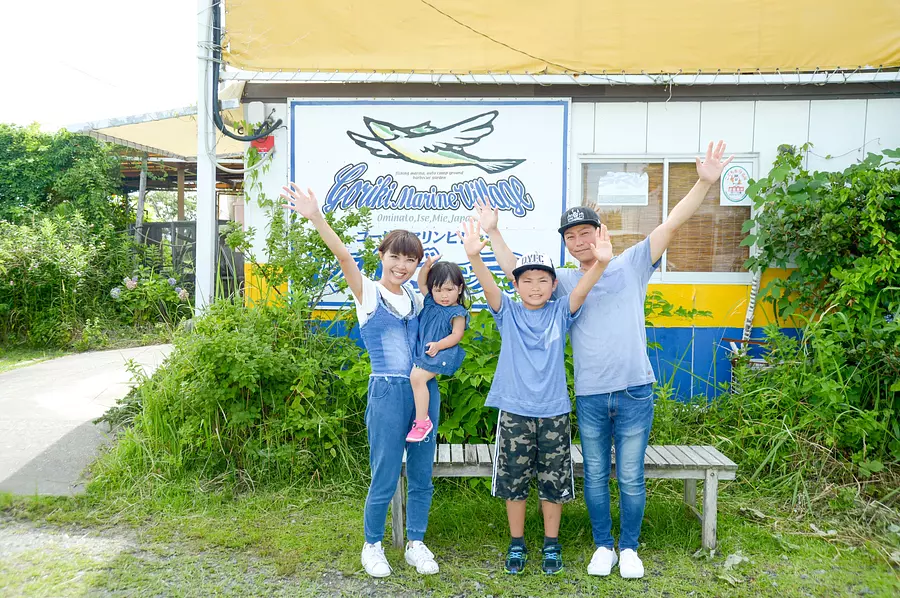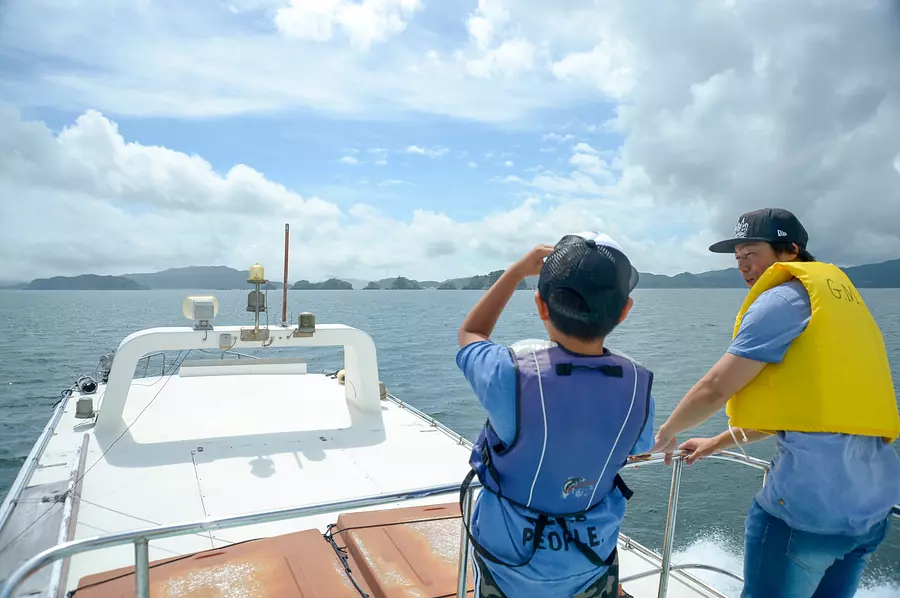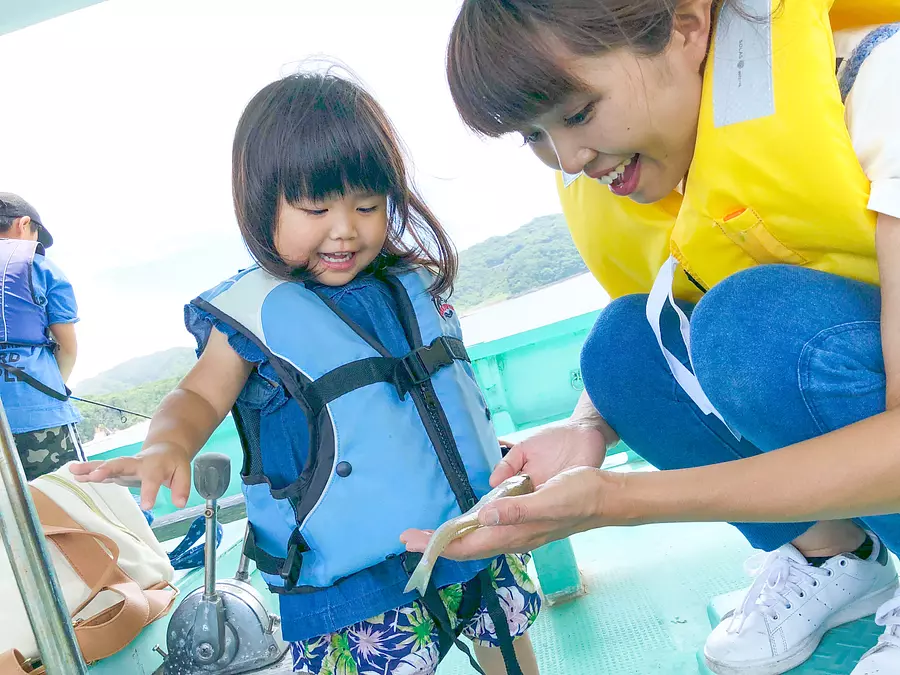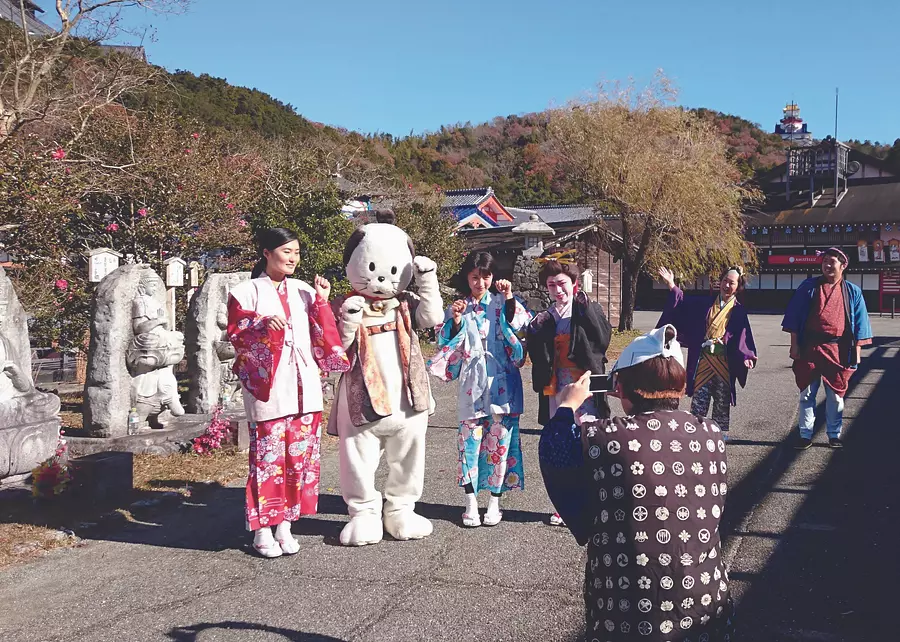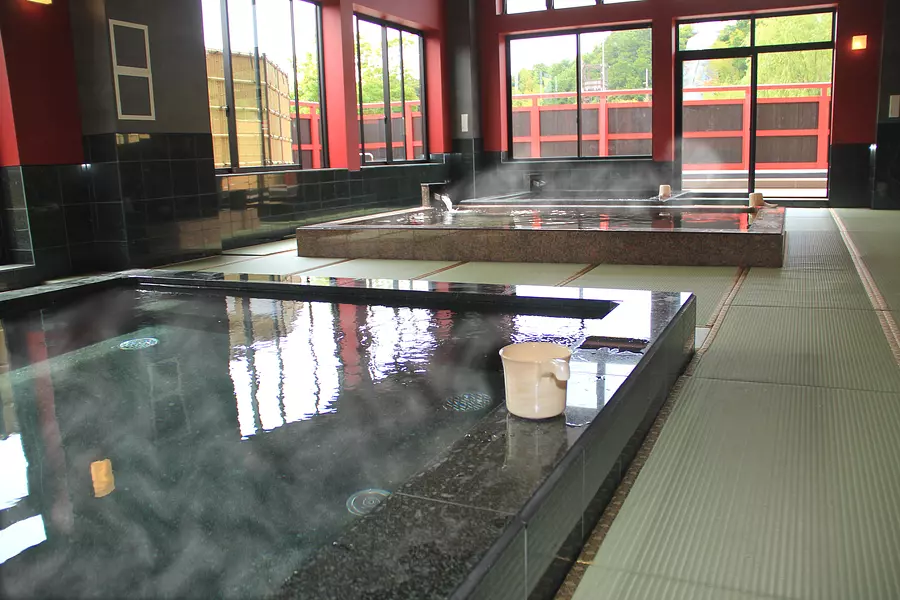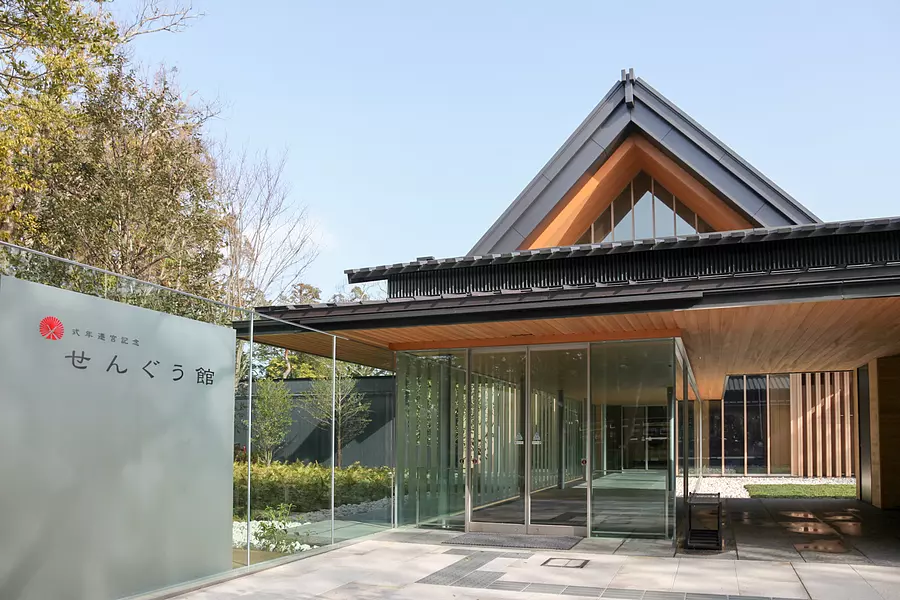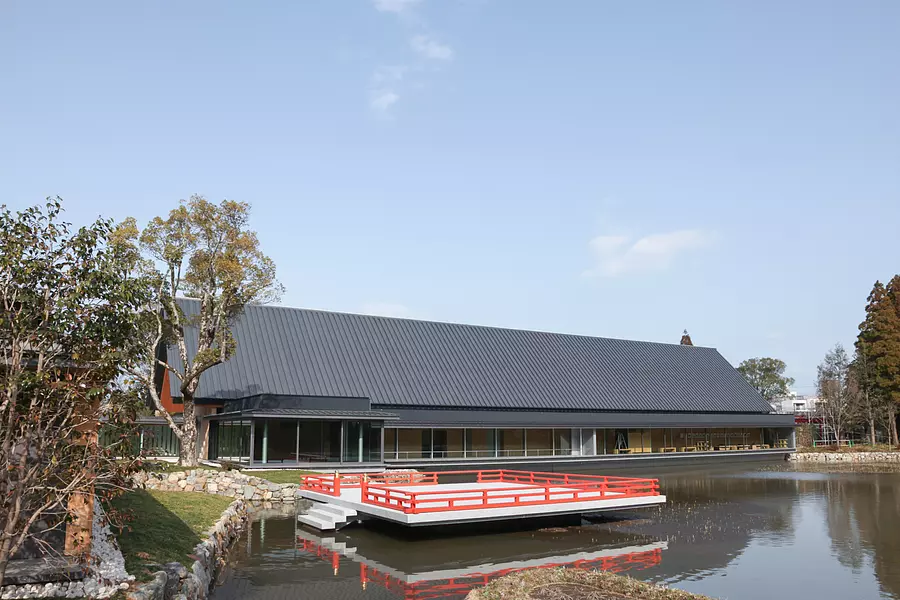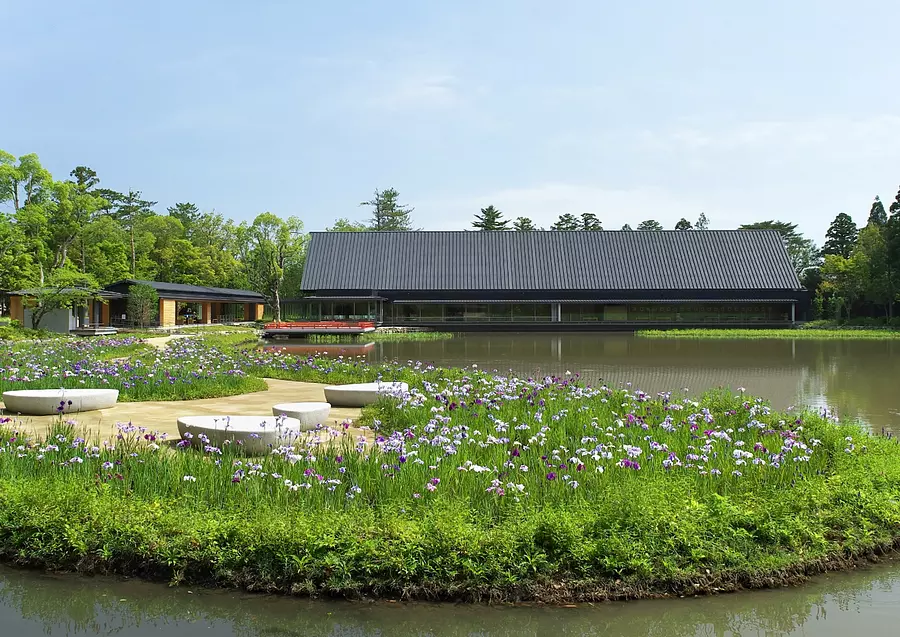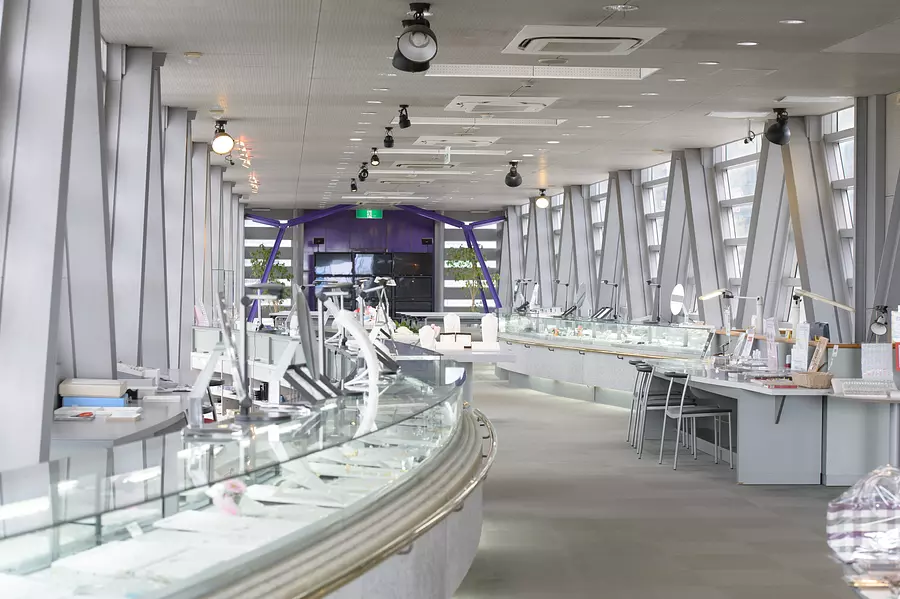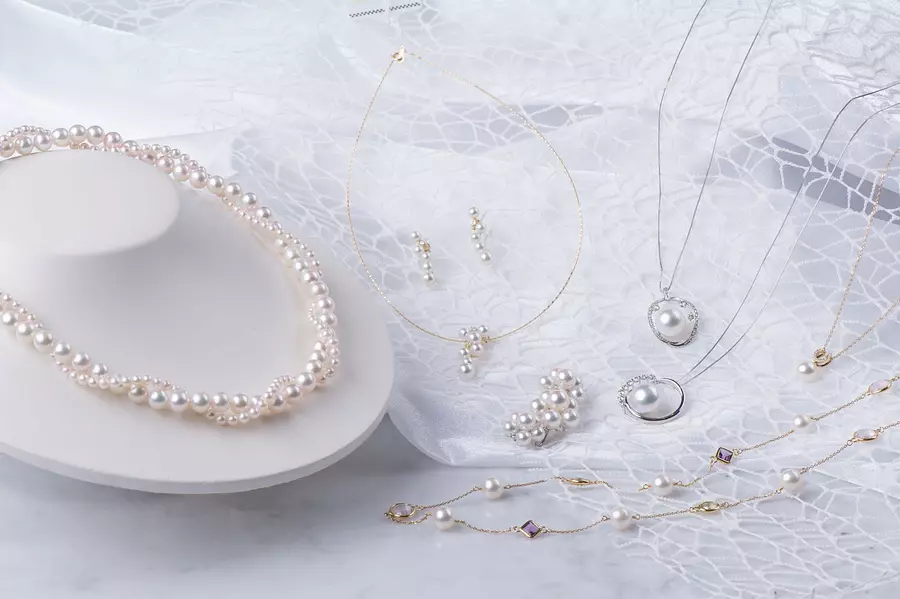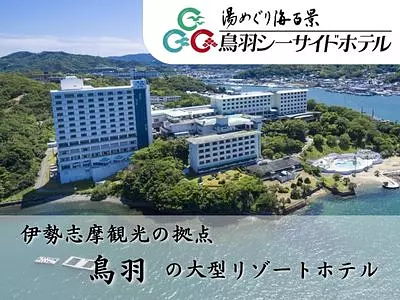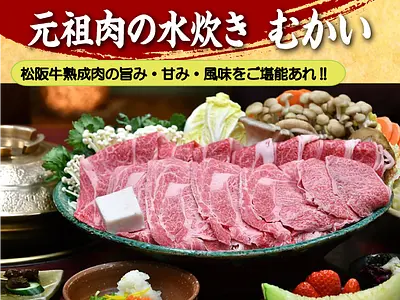Special feature on popular, standard, and little-known tourist spots in IseCity ♪ Seafood such as IseJingu, Meotoiwa(rocksofthemarriedcouple), and Ise lobster is also delicious ♪
掲載日:2016.10.06
We will introduce recommended sightseeing spots in IseCity.
When you think of Ise, you think of IseJingu, but there are many other attractive spots♪
There are many attractions such as scenic spots, power spots, goshuin stamp tours, delicious Ise-Udon and seafood dishes, etc.! We have listed spots that you should visit together with IseJingu.
Click here for the special page with explanations on how to visit IseJingu and details on how to access IseCity http://www.kankomie.or.jp/special/iseshima/
index
IseJingu Kotaijingu Shrine Naiku (IseCity)
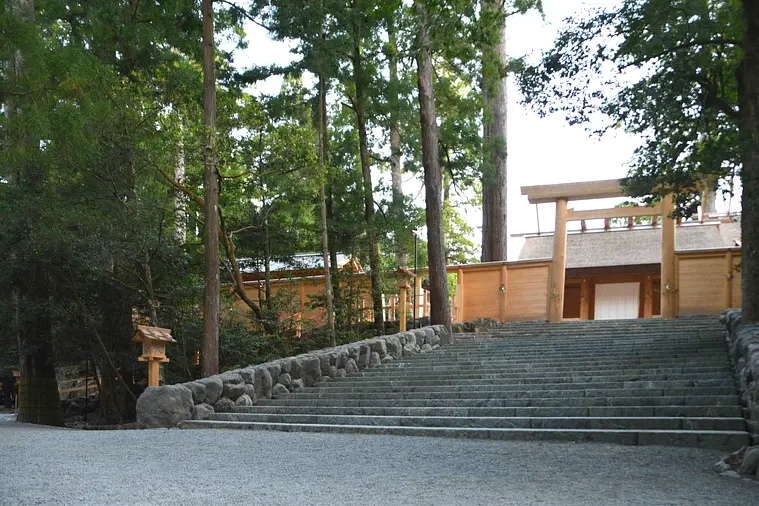
About 2,000 years ago, during the reign of Emperor Suinin, Kotaijingu has been located on the banks of the Isuzu River. It enshrines Amaterasu Omikami, the ancestor of the imperial family and revered like Amaterasu-Omikami by our people.
Once you cross UjibashiBridge, which is the entrance to Naiku, and proceed down the long approach paved with gravel, you will find yourself in a sacred precinct. The original scenery of Japan, known as the "hometown of the heart," spreads out here.
IseJingu Grand Shrine Geku (Toyouke-daijingu) (IseCity)
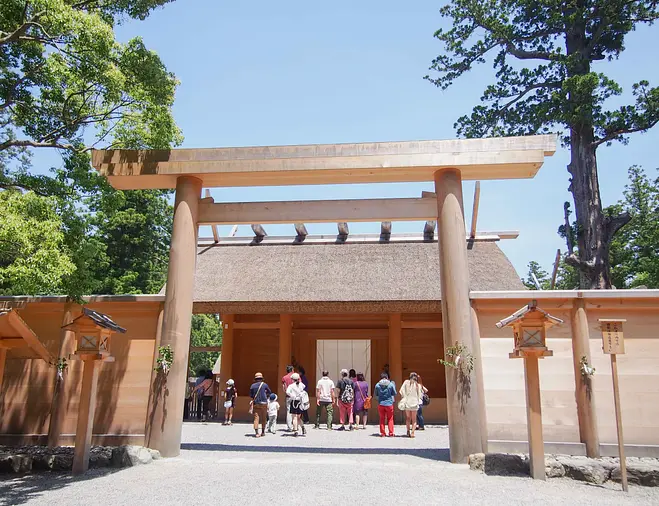
Toyouke-daijingu, located in the center of IseCity with Mt. Takakura in the background, enshrines Toyouke-no-Omikami. Toyouke-no-Omikami is the deity responsible for the meals of Amaterasu-Omikami in Naiku, and is also revered as the guardian deity of food, clothing, shelter, and industry. Passing through the torii gate, stepping on the gravel, and walking along the approach path with gentle sunlight filtering through the trees, you will be filled with a refreshing feeling.
Okage-yokocho (IseCity)
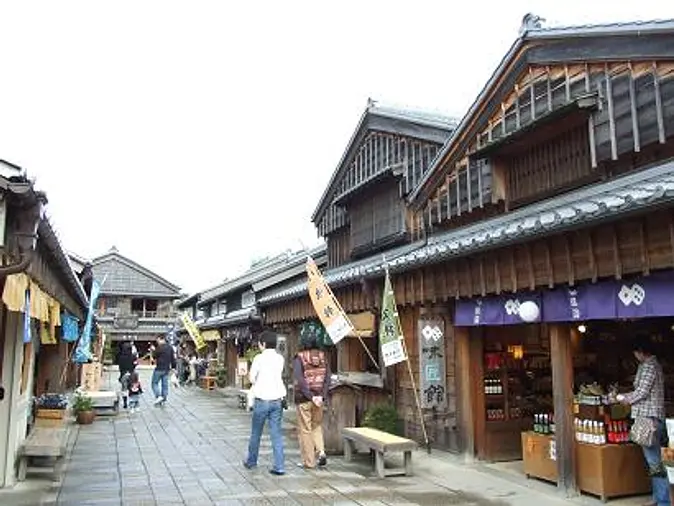
In the middle of the temple town of IseJingu Grand Shrine's inner Naiku, representative buildings of Iseji have been relocated and recreated. The charm of this region is condensed, so you can experience the taste of Mie's long-established stores, special products, history, customs, and humanity all at once. It is a relaxing place where every day is as lively as a festival, but where time passes in a relaxed and nostalgic way.
Related information
Oharai-Machi (IseCity)
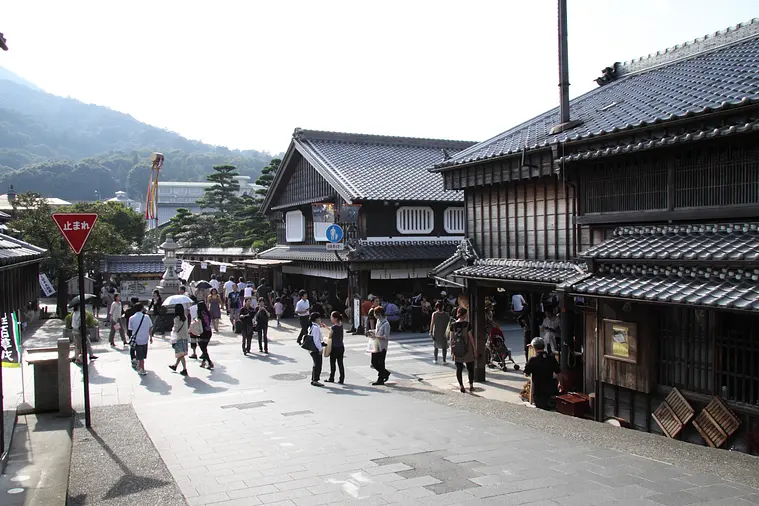
Naiku UjibashiBridge Oharai-Machi", which runs along the Isuzu River from before, has developed as a torii-mae (gateway) town for . The town is lined with souvenir stores, long-established confectionery stores, and ryokan (Japanese-style inns) in the gabled, gabled, and gabled roof styles characteristic of Ise, as well as historical buildings such as the Jingu Dojo (Shrine Dojo) and the Shishu (chief priest) office building. Naiku
Related information
Geku Approach (IseCity)
The 5-minute walk connecting IseCity Station and Geku is quiet and calm, unlike the bustling temple town of Naiku. There are many shops that are open, and there are many delicious and stylish shops. Enjoy lunch and dinner made with luxurious ingredients.
Why not check out the stylish souvenirs and heal the fatigue of your trip at a hot spring or inn?
Related information
Akafukumochi (IseCity)
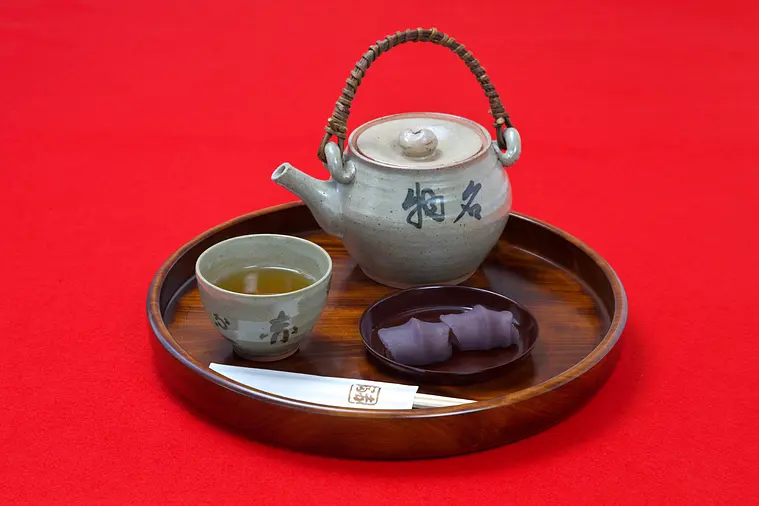
It is an old-fashioned gabled building with a gold sign that says it was founded 4 years ago, and the appearance of three large red stoves boiling water gives it an elegant appearance, and the traditional taste has been preserved to this day. The white mochi represents pebbles at the bottom of the river, and the three stripes on the bean paste represent the clear streams of the Isuzu River. The name comes from the word 'Akashin Keifuku'. (Akashin means sincerity, Keifuku means rejoicing in happiness)
Related information
Interview report: What is “Tsuitachi-Mochi” that can only be purchased on the first day of every month at Akafukumochi? ? Introducing the charms of Okage-yokocho Yokocho for a day, such as morning porridge and morning market!
Interview report: Akafuku is Akafukumochi souvenir from Ise! It goes without saying that there are many things we didn't know about this well-known Ise specialty, including its 300-year history and manufacturing methods.
Ise Naiku Iwatoya (IseCity)
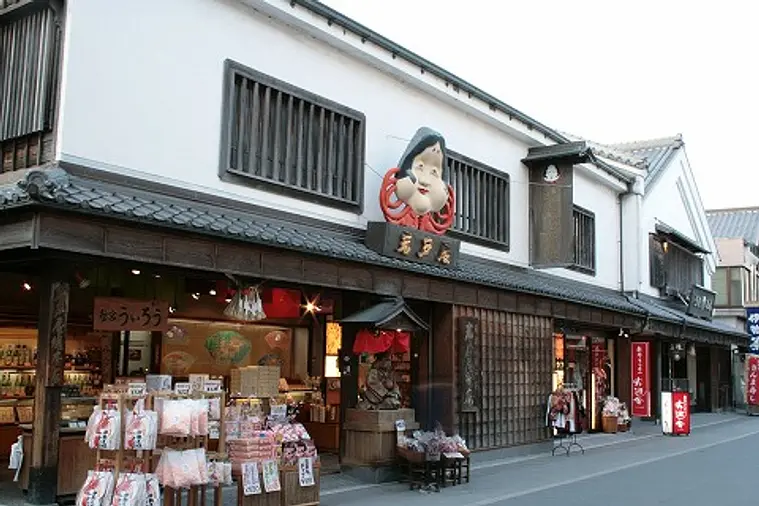
A long-established store that welcomes worshipers as a souvenir shop and restaurant that mainly sells Japanese sweets. The store is full of Ise souvenirs, including the famous ``Iwato Mochi,'' a fluffy rice cake wrapped in strained bean paste and sprinkled with soybean flour, ``Ginger Sugar,'' shaped like a shrine talisman, and the cute-looking ``Otafuku Manju.'' 30 seconds after entering Oharai-Machi from UjibashiBridge, you will see the Otafuku signboard.
~Trivia~
``Iwato Mochi'' is a famous confectionery associated with the myth of `` Amanoiwato'' that has been passed down in Ise. It is said to bring good luck and is popular as a souvenir.
Related information
Nikodo Horaitei (IseCity)
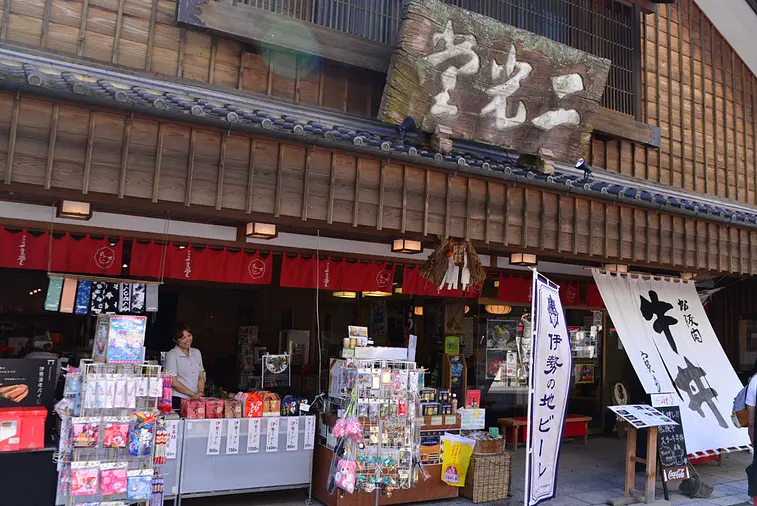
``Nikodo'' is a long-established souvenir shop located in `` Oharai-Machi'' in IseJingu Naiku Monzenmachi. The ``Matsusaka Niku Horaitei Steak Beef Bowl,'' made with melt-in-your-mouth Matsusaka meat served on top of rice, from the attached restaurant, ``Horaitei,'' is exquisite! The secret soy sauce sauce goes perfectly with rice. The store also has a menu that you can enjoy while walking along the approach, such as Matsusaka beef ``beef skewers'', ``croquettes'', and ``nikuman''.
Related information
Taikoshusse-Mochi (IseCity)
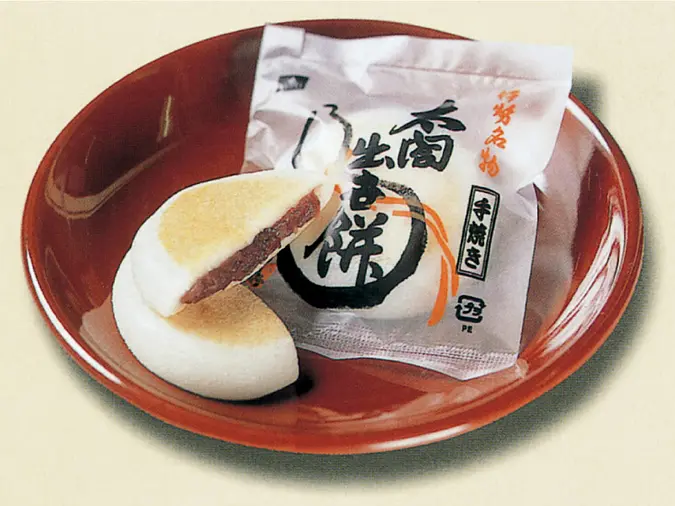
Taikoshusse-Mochi'' is a freshly made mochi made with sweet red bean paste that has been cooked to an elegant sweetness, giving it a light brownish appearance. The name comes from the fact that Hideyoshi, the ruler of Japan, praised it as ``delicious.'' You can enjoy rice cake while drinking tea, making it the perfect place to take a break from walking. This is a little-known spot located just a short distance from the approach to the shrine, right near Naiku UjibashiBridge.
Related information
Nikenjaya-Mochi (IseCity)
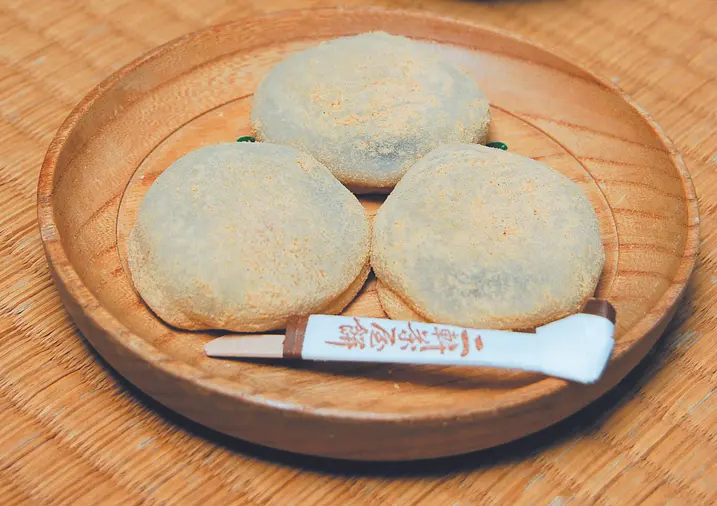
A thin rice cake filled with azuki bean paste and sprinkled with soybean flour. This rice cake was born at the boat dock for people visiting the shrine by boat. On the 25th of every month, brown sugar bean mochi will be sold for a limited time.
Related information
Interview report: Experience a history-filled food culture tour at Nikenjaya-Mochi!
Henba-Mochi (Oharai-Machi) (IseCity)
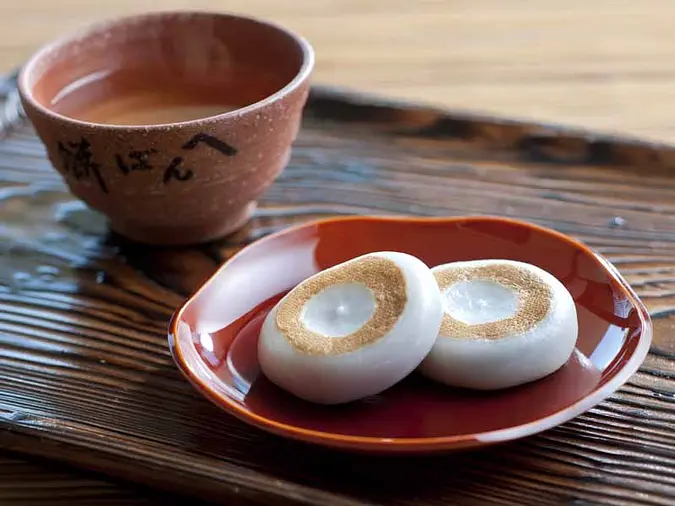
A long-established mochi shop founded in 1775. Henba-Mochi, which has impressive grill marks, is soft and smooth when you hold it in your hand. These Japanese sweets have a flavor that is brought out by lightly baking them, and have a chewy texture that is pleasant to the touch. You can also eat in at the small tatami room corner with a dirt floor.
~Trivia~
The name `` Henba-Mochi'' comes from the fact that visitors to the shrine returned their horses in front of the Miyagawa ferry (henba).
Related information
Toraya Uiro (Naiku Branch) (IseCity)
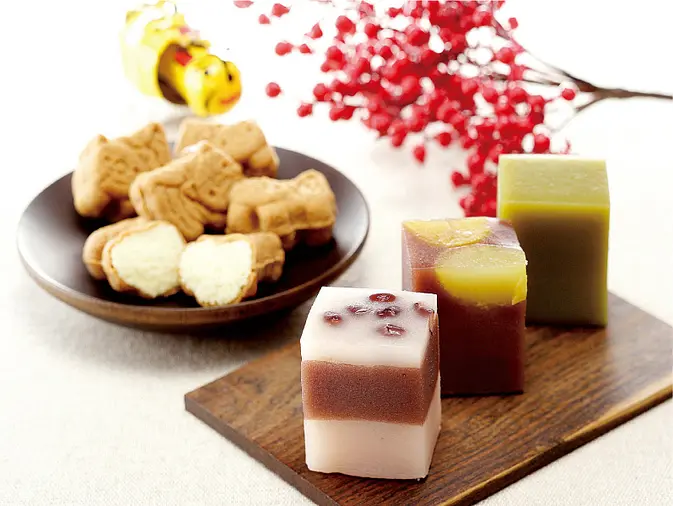
This restaurant is popular for its chewy and delicious raw fish. The chewy texture and refreshing sweetness are exquisite. Yuzu, brown sugar, cherry blossoms, matcha, mugwort, chestnuts...There is a wide variety of fresh greens with beautiful colors, including seasonal items, and part of the fun is deciding which one to buy. There are two shops (Naiku and Isuzugawa branch) on Oharai-Machi.
SenguKanMuseum [Museum of IseJingu] (IseCity)
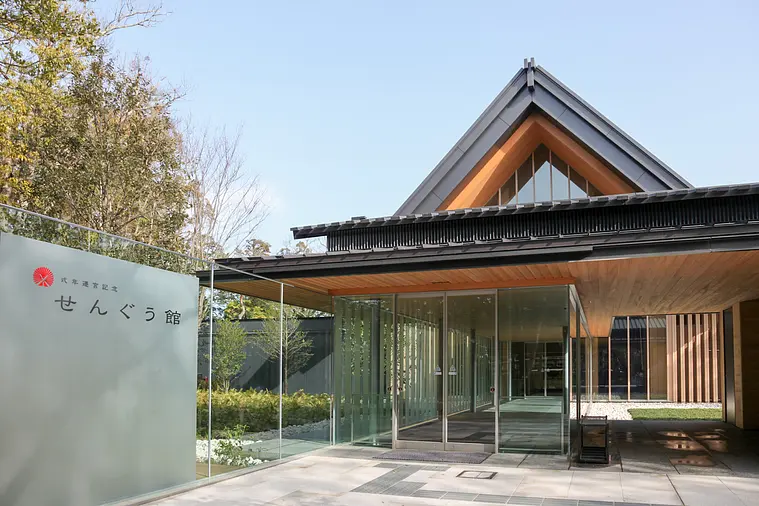
It is located on the shore of the Magatama Pond in IseJinguGeku and was built to commemorate the 62nd ShikinenSengu in 2013.
The basic philosophy is to "convey ShikinenSengu the Jingu Shrine," and this facility displays some of the tools, rituals, costumes, and sacred treasures used in the construction of ShikinenSengu, which is repeated once every 20 years.
Senokuniya Geku Former Branch Toyonkan (IseCity)
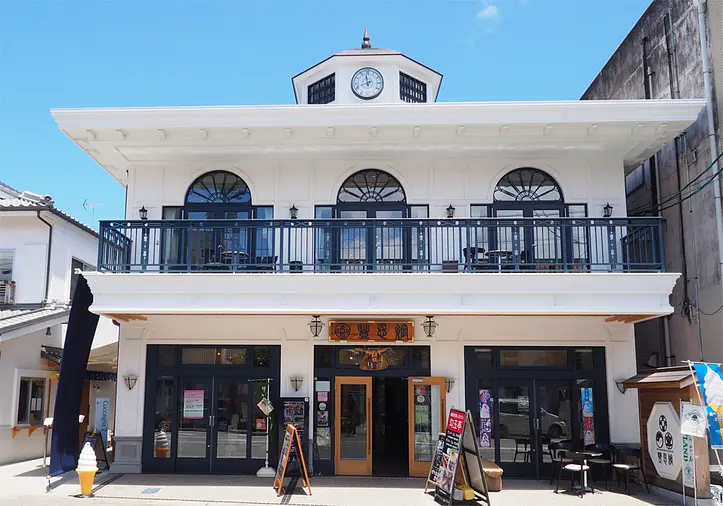
The first floor of the building, which has a distinctive white Western-style building, is filled with souvenirs unique to Ise. The `` Kamiyo-Mochi'', which has a refreshing mugwort scent, and the ``Senokuni'', which is handmade from 100% Dainagon, are all carefully crafted items that are made without additives. Hoonkan original products such as local sake ``Mizuho'' are also available. The buffet restaurant "Magatama-tei" on the second floor is a buffet-style restaurant that focuses on locally produced food for local consumption. Enjoy fresh local fish sashimi and local vegetables.
Ise Shima Skyline (IseCity)
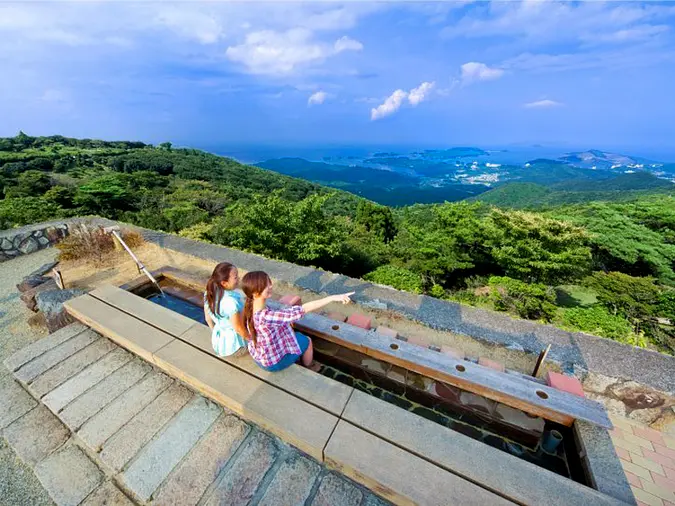
The magnificent panorama of Ise Bay is spectacular! You can enjoy a spectacular view while soaking in the footbath.
On a clear day, you can even see the Japanese Alps and Mt. Fuji. In the vast 150,000 square meter garden at the top of the mountain, you can enjoy seasonal flowers such as Asaguma Nanakusa and Jingu Azalea, and there are also hammocks and walking trails. Near the top of the mountain, there is Kongosho-ji Temple, a famous temple of the Nanzen-ji sect, which has been famous for a long time ago, saying, ``If you visit Ise KongoshojiTemple you...''. This temple is also called the inner temple of the shrine as it protects the demon gate of IseJingu. The main hall is designated as an important cultural property and is dedicated to one of Japan's three great Kokuzo Bodhisattvas.
Related information
The Post in the sky (IseCity)
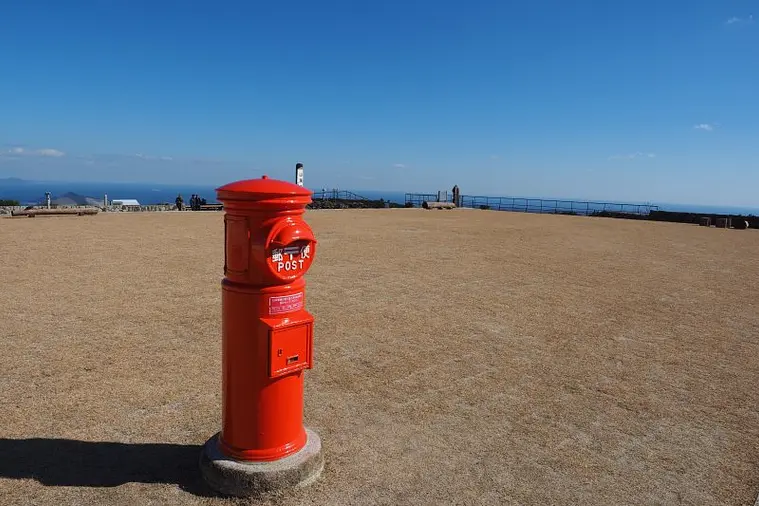
Ise Shima Skyline Asakumacho Observation Deck has a nostalgic mailbox, which is called the `` The Post in the sky''. The official name is "No. 1 round post" and it is a type that was active from the postwar period to the 1950s, and its nostalgic appearance blends into nature and the landscape. Collection and delivery operations are carried out every day except Sunday. People who stop by the mountaintop can purchase stamps and postcards at the shop and have them mailed.
Related information
KongoshojiTemple (IseCity)
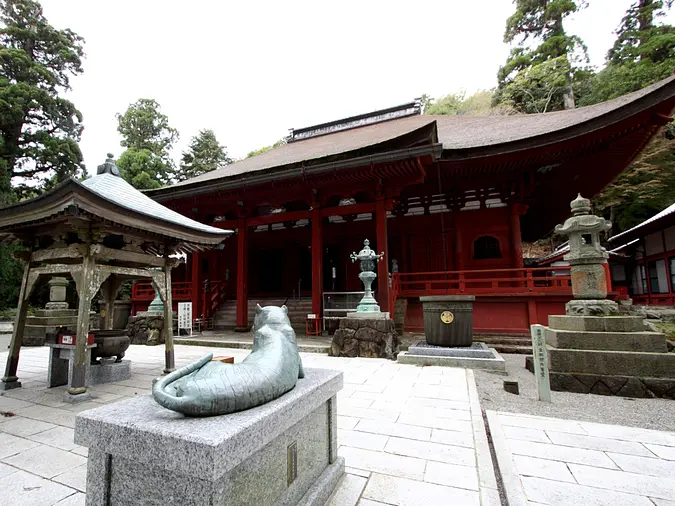
This is an ancient temple connected to Mt.Asama located on the summit of Mt. Asama, and is also famous as the temple that protects the demon gate of IseJingu. KongoshojiTemple is said to have been founded by Akatsukidai Shonin during the Kinmei period (late 6th century).
In the second year of Tencho (825), Kobo Daishi Kukai built the main dojo for Shingon esoteric Buddhism, enshrining Fukuichi Mankokuzo Bodhisattva as the principal image, and named it Shobōzan Kabutsuin Kongoshoji KongoshojiTemple. It is said that Kobo Daishi Kukai practiced Kokuzo Gumonjiho on this mountain. After that, a period of no residence continued, and in the third year of Meitoku (1392), the 71st head of Kamakura Kenchoji Temple (61st head of Engakuji Temple), Butji Zen Master, entered the temple and worked to revive the temple. Butschi Zenji is regarded as the founder of the Chukyo sect, and he converted from the Shingon sect to the Rinzai sect, becoming a temple of the Nanzenji sect of the Rinzai sect.
Related information
Tsukiyominomiya [IseJingu Betsugu] (IseCity)
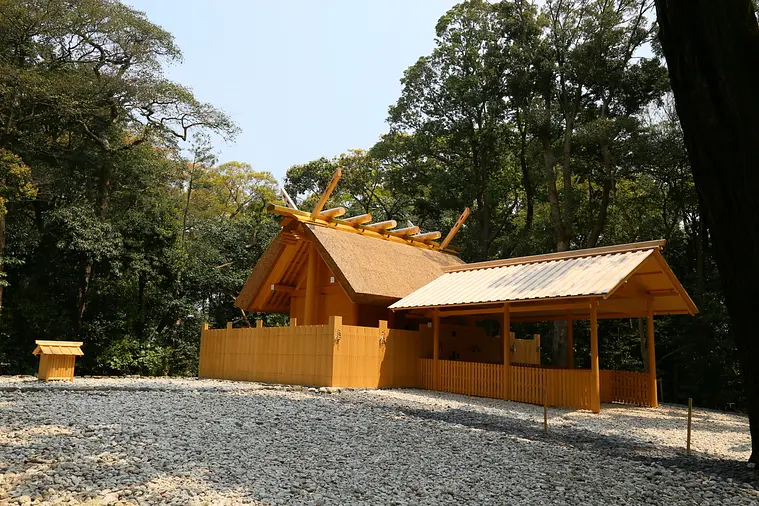
The enshrined deity is Tsukiyomi no Mikoto. It is the younger brother of Amaterasu-Omikami and is the same deity enshrined at Naiku Betsugu Tsukuyomi Shrine. Tsukuyomi Shrine enshrines Tsukiyomi Son and Aramitama in separate shrine buildings, but Tsukiyominomiya enshrines Tsukiyomi Son and Tsukiyomi Son Aramitama in one shrine building.
Tsukiyominomiya is located at the end of Shinji-dori, which stretches west from the Geku north gate. Surrounded by many trees, including a several hundred year old camphor tree, the Shinto sanctuary has a quiet and peaceful atmosphere that one would not expect in an urban area.
Yamatohime-no-miya [IseJingu Betsugu] (IseCity)
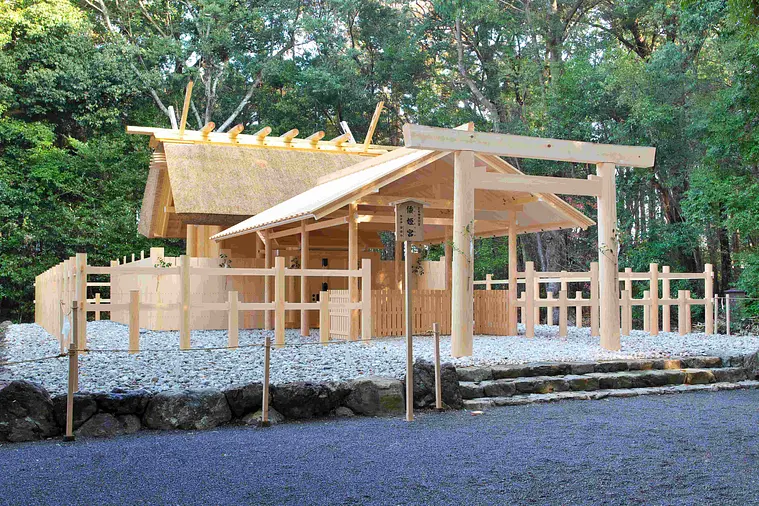
Yamatohime-no-miya is located on Mt. Kurata, in the middle of the Miyuki Road that connects Naiku and Geku, and enshrines Wahime no Mikoto. On the west side of the bright green Mt. Kurata, there are the Jingu Chokokan, Agricultural Museum, art museum, and Jingu Bunko, and this area is called the ``Wahime Cultural Forest.'' It is famous for its regular festivals in spring (May 5th) and autumn (November 5th).
Tsukuyomi Shrine [IseJingu Betsugu] (IseCity)
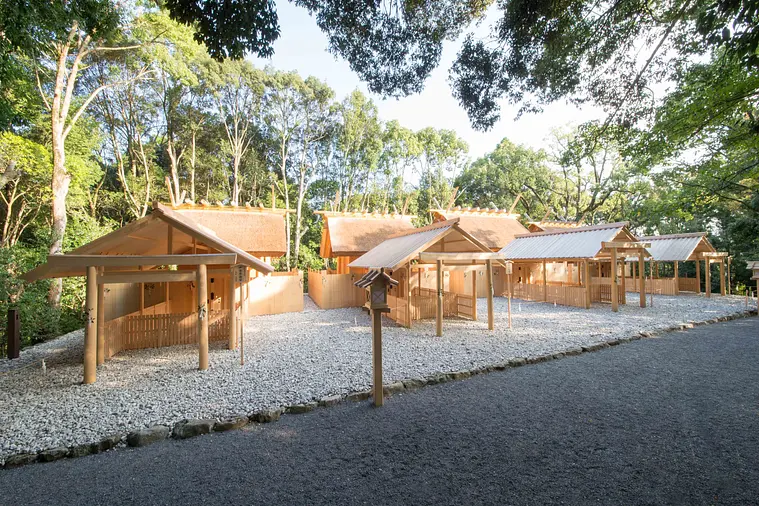
The enshrined deity is Tsukuyomison. It is the younger brother of Amaterasu-Omikami and is the same deity enshrined at Geku Betsugu Tsukiyominomiya As it is written as ``reading the moon,'' it means that he is a god who teaches the phases of the moon and controls the calendar.
From the right, there are four Betsugu, Tsukuyomi Aramitama Shrine ②, Tsukuyomi Shrine ①, Isanagi Shrine ③, and Isanaya Shrine ④, and it is common to visit them in the order of ① to ④.
Hinichikan (IseCity)
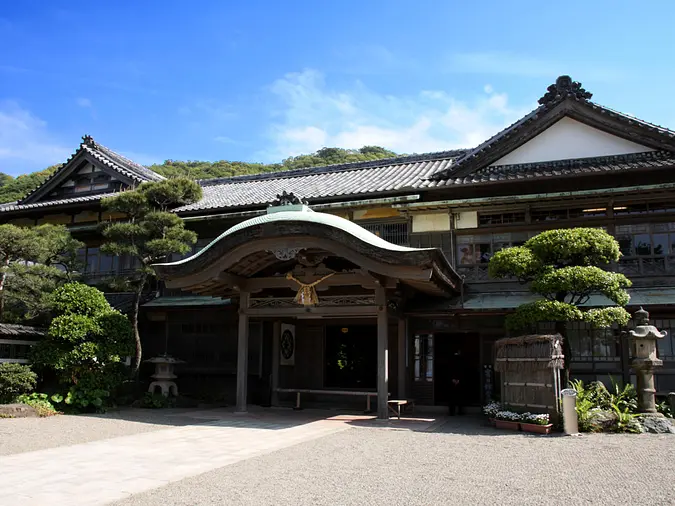
The historic building, where successive members of the imperial family and important figures from various fields who visited IseJingu stayed overnight, is now open to the public as a museum. The Momoyama-style folded coffered ceiling and chandelier are a beautiful fusion of Japanese and Western style. The building is a nationally designated important cultural property, and the garden is a nationally designated scenic spot.You can see traditional Japanese architecture, such as the dignified design by the top architects of the time, the carefully selected materials, and the skills of the craftsmen.
Sarutahiko-JinjaShrine (IseCity)
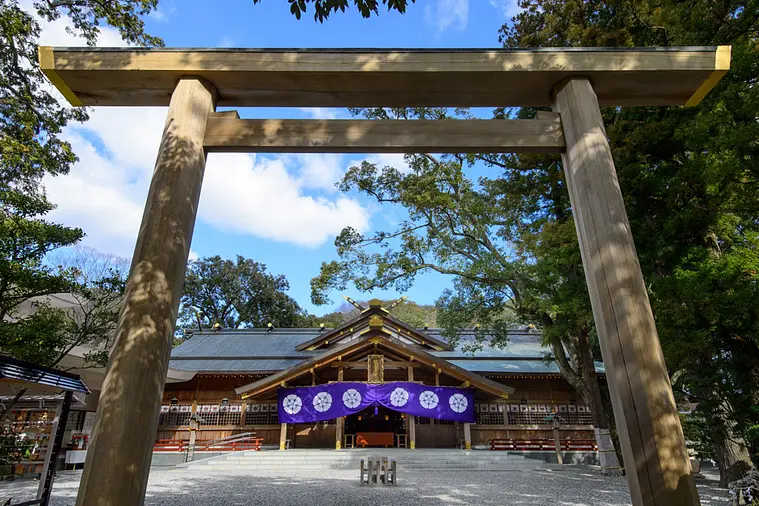
Sarutahiko Okami is said to be a landowner god who guided his grandson Ninigi no Mikoto to this country and devoted himself to the development and management of the country, mainly in Ise. Ota-no-Mikoto, a descendant of the great god, dedicated the land upstream of Isuzu when the princess Wahime-no-Mikoto went on a pilgrimage in search of a place to enshrine the shrine, and the Ise Jingu was built there. Our company is a shrine where its direct descendants have enshrined the ancestor god.
Okami is known as the god of ``Michihiraki,'' who takes the lead in everything, guides people to the right direction, and opens the way for the world. This faith has spread throughout the country, and prayers are held every day for things such as direction, protection from disaster, breaking ground, business prosperity, traffic safety, and good luck. The Omita Festival (prefectural intangible cultural property) held on May 5th every year is based on an old tradition.
Related information
Matsuo Kannonji Temple (IseCity)
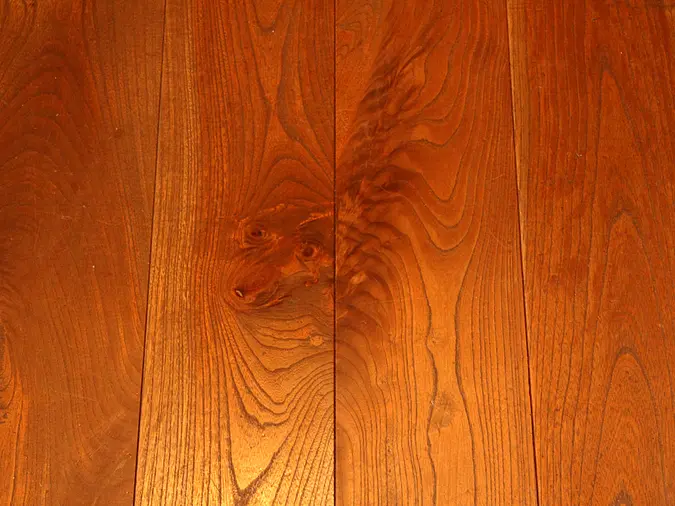
It is the oldest Kannon in Japan to ward off evil spirits and has the legend of ``Dragon of Two Ponds'', celebrating its 1,300th anniversary (2012). Since ancient times, it has been said that if you pray to Kannon on August 9th and roll this Dalian beads, you will receive the merits and benefits equivalent to visiting Kannon for 46,000 days. The principal image is the Eleven-faced Kannon Bodhisattva.
There is a flower festival in mid-April, and 250 Kirishima azaleas are planted in the Ryujin Garden in the shape of a 25-meter-long "nobori dragon" holding a red and white ball.
Ise Kawasaki Merchant Hall (IseCity)
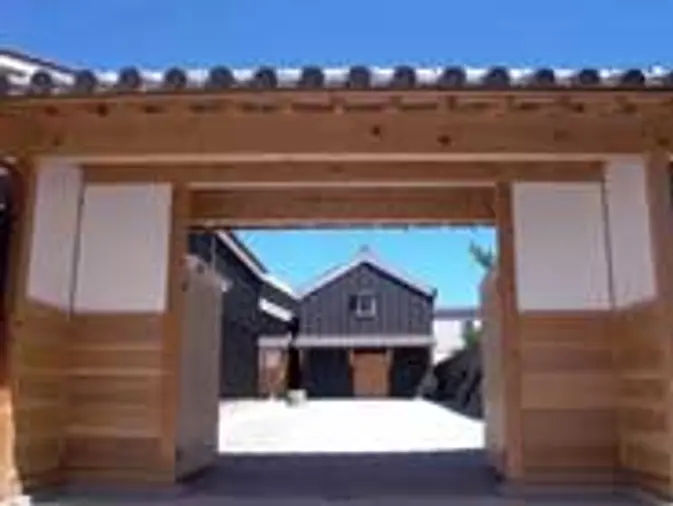
A base facility for town development and the inheritance of traditional culture in Ise Kawasaki.
This facility is a restored merchant's house in the wholesale district that served Ise and the people who visited Ise since the Edo period as the kitchen of Ise, and 12 of the buildings are registered cultural properties of the country.
Inside the facility, the three warehouses facing the Setagawa River are used as merchant warehouses and house 30 stores, and the exhibition rooms of the Kawasaki Machinami Museum and the Uchiro Museum exhibit exhibits on the history and culture of Ise and Kawasaki. Masu. There is also a place in the main building that depicts a tea room in Kyoto, and you can experience it on tea ceremony days.
Related information
GorikiMarineVillage (IseCity)
In order to make effective use of the vast site, it is a complex with a marina as the center, fishing by boat, fish handling experience and barbecue, salt making, dried fish making experience area, outdoor rest garden, seafood processing room, grass field, etc. It's a facility. Lots of experience news! Please see GorikiMarineVillage website for the latest experience menu.
Related information
Click here for a detailed interview report → Beginners OK! GorikiMarineVillage you can go out light and enjoy fishing and BBQ
Meotoiwa(rocksofthemarriedcouple) (IseCity)
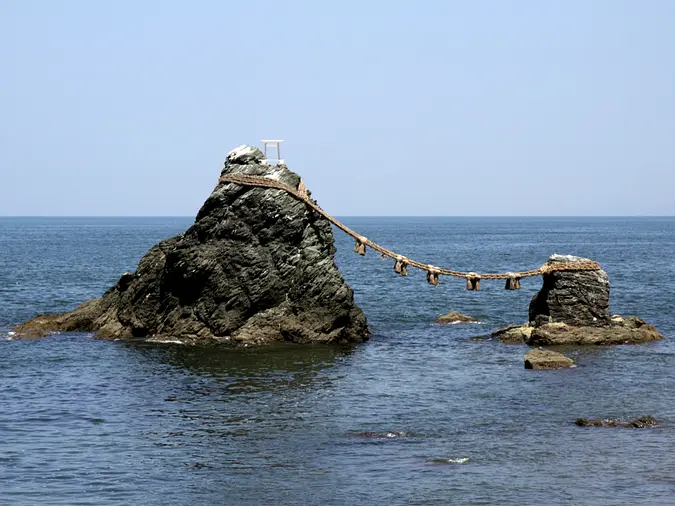
Meotoiwa(rocksofthemarriedcouple) has been known as a sunrise worship place since ancient times. Approximately 700 meters offshore lies the Okitama Shinseki (spirit stone) associated with Sarutahiko no Okami, which is said to be the place where the descending god rests and is a sacred place where the gods from the land of eternity approach.
Meotoiwa(rocksofthemarriedcouple) is considered to be a torii gate from which to admire the Okitamajinseki and the sunrise. Otokoiwa is 9m high, Onnaiwa is 4m high, and the Oshimenawa that connects the Meotoiwa(rocksofthemarriedcouple) is 35m long and stretched 16m to Otokoiwa and 10m to Onnaiwa. It is 9m long. The O-Shimena Hari ritual is held every year on May 5th, September 5th, and Saturdays and Sundays in mid-December.
Related information
Futamiokitama-JinjaShirine (IseCity)
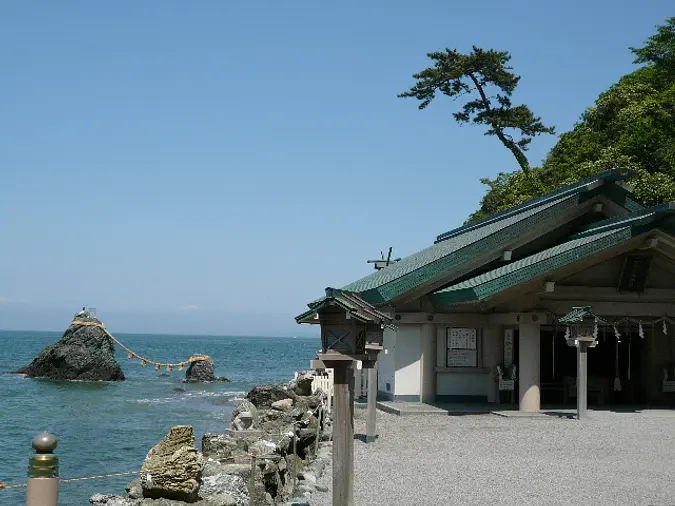
This shrine enshrines Sarutahiko Okami as its enshrined deity, and is said to have blessings on matchmaking, marital harmony, and traffic safety.
Meotoiwa(rocksofthemarriedcouple) seen in front are considered to be Okitamajinseki, a spiritual stone connected to Sarutahiko no Okami, located about 700m off the coast, and a torii gate for worshiping Hinokami no Okami. Since ancient times, there has been a custom of ``Hamasangu'' to purify the mind and body with the seawater of FutamiuraBeach before visiting the shrine, and even today, many worshipers first visit the shrine, receive purification, and then head to the shrine. In the precincts, there are many Futami frogs (frogs that hatch safely and lent items that hatch) that are said to be the messengers of Sarutahiko Okami.
Related information
ISEmeotoiwaINTERACTIVEAquariumISESeaParadise Sea Paradise (IseCity)
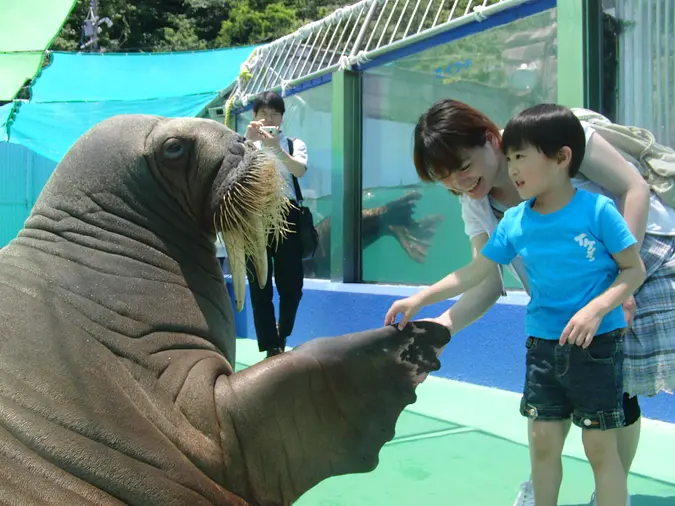
An aquarium where you can see animals up close, touch them, and feel their body temperature.
Steller sea lions welcome you at the aquarium entrance. There are a variety of attractions including a walrus that is good at blowing dynamic kisses, cute sea lion performances, and seal touching. Everyone can enjoy being a child.
Related information
Tomoiki no NinjaKingdomIse (IseCity)
A theme park with a historical townscape centered around Azuchi Castle, where you can experience the history and culture of ninjas and town girls. Watch theaters where you can enjoy a live experience, such as the ninja action show ``Great Ninja Theater'' and the laughter and tears ``Yamada Magistrate''. There are a variety of facilities that can be enjoyed by both adults and children.
The real puzzle-solving game is a game where you walk around the park solving the instructions and problems written on the kit, solving the answers and getting closer to the goal. It is popular not only among enthusiasts but also among first-timers. You can enjoy ``Ninja'' for beginners and ``Mitsuhide'' for advanced students while walking around the park.
Related information
Click here for a detailed interview report → Travel back in time to the Sengoku period at “NinjaKingdomIse”!
Ozaki Kado Memorial Museum (IseCity)
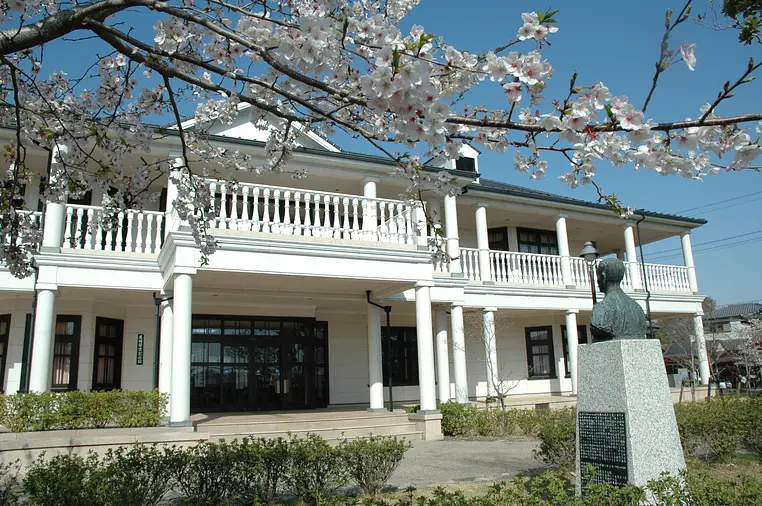
The Ozaki Kado Memorial Museum was opened in commemoration of the politician YukioOzaki (Ozaki Kado).
In the memorabilia display room, you can view photographs, suicide notes, mementoes, etc.
Jingu Chokokan/Agriculture Museum [Museum of IseJingu] (IseCity)
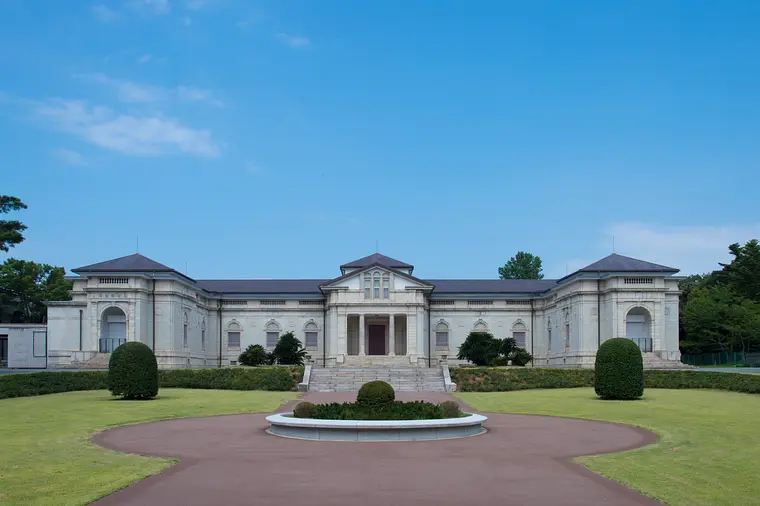
[Jingu Chokokan]...Displays sacred treasure costumes from the shrine that were removed during ShikinenSengu, arts and crafts made with Japan's best techniques, archeology of nationally important cultural properties, historical materials, etc. General museum. A two-story brick building that incorporates a Renaissance style history museum. Nationally registered tangible cultural property.
[Jingu Agricultural Museum] Japan's oldest industrial museum whose theme is ``How useful are natural products?'' The Chokokan and Agricultural Hall buildings, designed by designer Higashikuma Katayama, were designated as nationally registered tangible cultural properties in 1998.
SenguKanMuseum [Museum of IseJingu] (IseCity)
It is located on the shore of the Magatama Pond in IseJinguGeku and was built to commemorate the 62nd ShikinenSengu in 2013.
The basic philosophy is to "convey ShikinenSengu the Jingu Shrine," and this facility displays some of the tools, rituals, costumes, and sacred treasures used in the construction of ShikinenSengu, which is repeated once every 20 years.
Ise/ Mitasu-no-yu (IseCity)
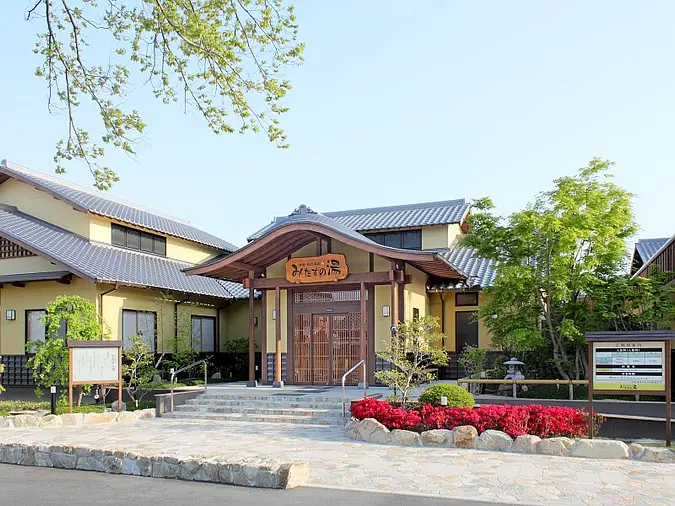
``Ise Funae Mitasu-no-yu'' is one of the largest super public baths in the Ise-Shima area, which opened within the shopping mall ``Mitasu Ise''. In addition to 11 types of baths, including carbonated springs, silk baths, and super jet baths, we also have facilities such as the restaurant ``Hyotan-tei'', a chiropractor/esthetic salon, a game corner, and a rest room.
Wakamatsuya Ise Handmade Kamaboko Workshop (IseCity)
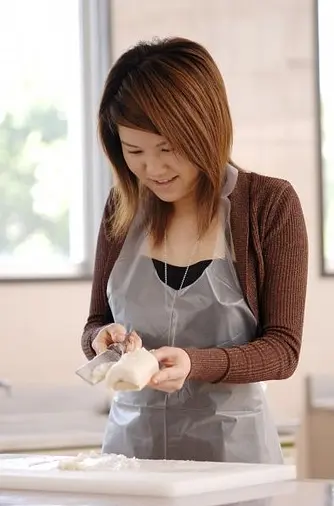
We are holding a ``handmade kamaboko experience workshop'' at Wakamatsuya so that you can experience the traditional techniques and deliciousness of kamaboko for yourself. In addition to being able to make your own kamaboko using a ``tsuke-bōcho'' knife without a blade, you can also enjoy freshly grilled kamaboko with surimi on a skewer.
Reservations are required for the experience.
Related information
Ise Shima Souvenir Center Osho Ise Store (IseCity)
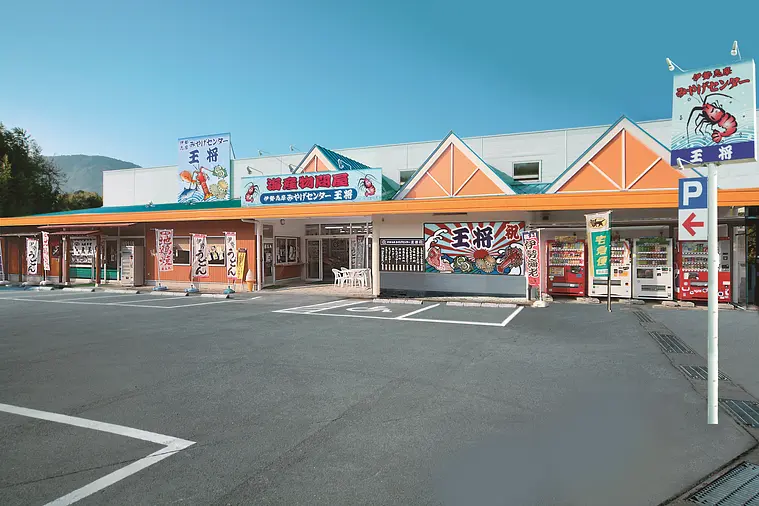
A large directly managed store of a manufacturer and wholesaler that stocks Ise-Shima's specialties and specialty products all in one place. You can relax while shopping while sampling the food in the spacious store. We are located right next to the Ise Nishi Interchange, so please stop by when you visit Ise.
Related information
Pearl Falco Co., Ltd. Ise store (IseCity)
Pearl Falco was born from Ise-Shima, the birthplace of pearl farming, based on the concept of FALCO: Familiar, Loved, and Confidence.
"Living jewels - pearls" are carefully nurtured and born in the beautiful seas of Japan. There are a wide variety of pearls. We are particular about thorough proposals and after-care services so that you can understand the difference, buy with confidence, and use our products for many years to come. Please feel free to contact us.
| Category | |
|---|---|
| season | |
| area |





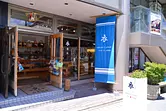







![SenguKanMuseum [Museum of IseJingu]](https://www.kankomie.or.jp/rails/active_storage/representations/proxy/eyJfcmFpbHMiOnsibWVzc2FnZSI6IkJBaHBBdGZVIiwiZXhwIjpudWxsLCJwdXIiOiJibG9iX2lkIn19--9d7ad277e5fd3bab5e8edb77d3da7cab9dc6c2a5/eyJfcmFpbHMiOnsibWVzc2FnZSI6IkJBaDdCem9MWm05eWJXRjBPZ2wzWldKd09oSnlaWE5wZW1WZmRHOWZabWwwV3dkcEFhWXciLCJleHAiOm51bGwsInB1ciI6InZhcmlhdGlvbiJ9fQ==--eb90280ff6a4fc8dcd70892674b7dec5a7ad4845/1592_1_org.jpg)




![Tsukiyominomiya [IseJingu Betsugu]](https://www.kankomie.or.jp/rails/active_storage/representations/proxy/eyJfcmFpbHMiOnsibWVzc2FnZSI6IkJBaHBBdExVIiwiZXhwIjpudWxsLCJwdXIiOiJibG9iX2lkIn19--0fb8d4290219ce1a100edad0f946fd2402ef5ce9/eyJfcmFpbHMiOnsibWVzc2FnZSI6IkJBaDdCem9MWm05eWJXRjBPZ2wzWldKd09oSnlaWE5wZW1WZmRHOWZabWwwV3dkcEFhWXciLCJleHAiOm51bGwsInB1ciI6InZhcmlhdGlvbiJ9fQ==--eb90280ff6a4fc8dcd70892674b7dec5a7ad4845/1587_1_org.jpg)
![Yamatohime-no-miya [IseJingu Betsugu]](https://www.kankomie.or.jp/rails/active_storage/representations/proxy/eyJfcmFpbHMiOnsibWVzc2FnZSI6IkJBaHBBdFRVIiwiZXhwIjpudWxsLCJwdXIiOiJibG9iX2lkIn19--440ced69a1533297320bda542d4d5a494bd8d262/eyJfcmFpbHMiOnsibWVzc2FnZSI6IkJBaDdCem9MWm05eWJXRjBPZ2wzWldKd09oSnlaWE5wZW1WZmRHOWZabWwwV3dkcEFhWXciLCJleHAiOm51bGwsInB1ciI6InZhcmlhdGlvbiJ9fQ==--eb90280ff6a4fc8dcd70892674b7dec5a7ad4845/1589_1_org.jpg)
![Tsukuyomi Shrine [IseJingu Betsugu]](https://www.kankomie.or.jp/rails/active_storage/representations/proxy/eyJfcmFpbHMiOnsibWVzc2FnZSI6IkJBaHBBdFBVIiwiZXhwIjpudWxsLCJwdXIiOiJibG9iX2lkIn19--62b4818c7c2f779e2591d581badad8ec8b74f9c1/eyJfcmFpbHMiOnsibWVzc2FnZSI6IkJBaDdCem9MWm05eWJXRjBPZ2wzWldKd09oSnlaWE5wZW1WZmRHOWZabWwwV3dkcEFhWXciLCJleHAiOm51bGwsInB1ciI6InZhcmlhdGlvbiJ9fQ==--eb90280ff6a4fc8dcd70892674b7dec5a7ad4845/1588_1_org.jpg)




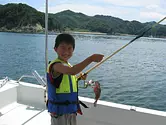



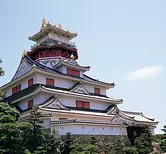

![Jingu Chokokan/Agriculture Museum [Museum of IseJingu]](https://www.kankomie.or.jp/rails/active_storage/representations/proxy/eyJfcmFpbHMiOnsibWVzc2FnZSI6IkJBaHBBdGJVIiwiZXhwIjpudWxsLCJwdXIiOiJibG9iX2lkIn19--68901aaff1170e53f33293e678bcf9445fac063e/eyJfcmFpbHMiOnsibWVzc2FnZSI6IkJBaDdCem9MWm05eWJXRjBPZ2wzWldKd09oSnlaWE5wZW1WZmRHOWZabWwwV3dkcEFhWXciLCJleHAiOm51bGwsInB1ciI6InZhcmlhdGlvbiJ9fQ==--eb90280ff6a4fc8dcd70892674b7dec5a7ad4845/1591_1_org.jpg)
![SenguKanMuseum [Museum of IseJingu]](https://www.kankomie.or.jp/rails/active_storage/representations/proxy/eyJfcmFpbHMiOnsibWVzc2FnZSI6IkJBaHBBampqIiwiZXhwIjpudWxsLCJwdXIiOiJibG9iX2lkIn19--4dd2761dcf5c2f337de751e3a05cb657ccd44341/eyJfcmFpbHMiOnsibWVzc2FnZSI6IkJBaDdCem9MWm05eWJXRjBPZ2wzWldKd09oSnlaWE5wZW1WZmRHOWZabWwwV3dkcEFhWXciLCJleHAiOm51bGwsInB1ciI6InZhcmlhdGlvbiJ9fQ==--eb90280ff6a4fc8dcd70892674b7dec5a7ad4845/3523_1_org.jpg)



